The debate surrounding the adoption of 9-foot ceilings in architectural designs is multifaceted, presenting a blend of aesthetic allure and practical challenges.
While the increased vertical space undoubtedly introduces an element of grandeur and improved natural light penetration, it concurrently raises questions regarding the economic and environmental implications of such a design choice.
From heightened construction costs to potential escalations in heating and cooling demands, the decision to opt for a 9-foot ceiling warrants a comprehensive analysis.
This discussion aims to unpack these considerations, laying the groundwork for a nuanced understanding of how ceiling height can profoundly influence both the form and function of a space.
Key Takeaways
- Nine-foot ceilings enhance room aesthetics and create a sense of spaciousness.
- Higher ceilings can increase natural light, improving room ambiance.
- Maintenance and cleaning of high ceilings require more effort and possibly specialized equipment.
- Increased heating costs and energy efficiency challenges are significant considerations with nine-foot ceilings.
Advantages of 9-Foot Ceilings
9-foot ceilings elevate the aesthetic and functional qualities of a room, offering a series of distinct advantages. These higher ceilings not only enhance the overall ambiance of a space by providing a sense of openness and spaciousness but also improve the penetration of natural light. This increased illumination makes the room feel brighter and more inviting, a crucial aspect in creating a welcoming environment. Furthermore, the elevated ceiling height contributes to a luxurious and upscale atmosphere, potentially adding significant value to the property.
Moreover, 9-foot ceilings open up a plethora of design possibilities. The additional vertical space allows for the incorporation of taller furniture and more elaborate decorative elements, enabling designers and homeowners to craft a more grand and elegant interior. This flexibility is particularly appealing to those who appreciate a sophisticated aesthetic and wish to make a bold statement with their decor. The advantages of 9-foot ceilings, from enhancing the perception of space to offering more design freedom, clearly demonstrate their appeal in modern residential and commercial properties.
Challenges With Higher Ceilings
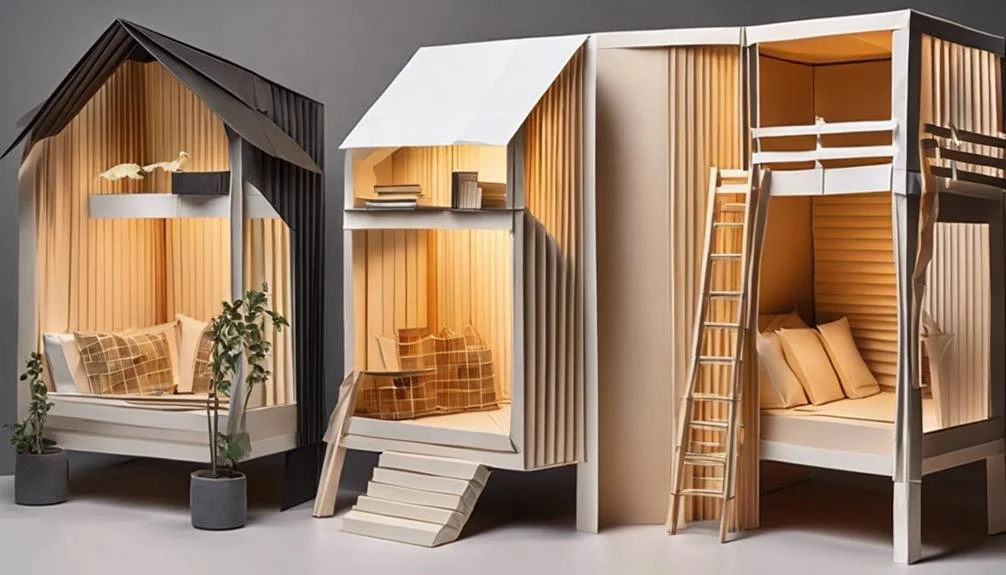
While the aesthetic appeal of higher ceilings is undeniable, they come with their own set of challenges. Maintenance tasks, such as cleaning and repairs, often become more cumbersome and may require specialized equipment or professional assistance.
Furthermore, increased heating costs are a significant consideration, as the extra volume of space demands more energy for heating, impacting overall home efficiency.
Increased Heating Costs
Often overlooked, the challenge of increased heating costs is a significant consideration for homeowners with higher ceilings. As warm air naturally rises, spaces with taller ceilings require more energy to maintain a comfortable temperature, leading to potentially higher utility bills. Addressing this issue involves strategic planning and investment in efficient solutions.
- Higher ceilings create a larger volume of space to heat, increasing energy consumption.
- Heating systems may need to operate for extended periods, exacerbating wear and leading to higher maintenance costs.
- Effective insulation and air circulation strategies are essential for mitigating these challenges.
- Investing in energy-efficient heating solutions can significantly reduce long-term costs associated with maintaining comfortable living conditions in homes with 9-foot ceilings.
Considering these factors is crucial for homeowners contemplating the aesthetic appeal versus the practical implications of higher ceilings.
Difficult Maintenance Tasks
Beyond the increased heating costs, homeowners must also navigate the challenges of maintaining the cleanliness and integrity of high ceilings. Cleaning and maintaining these elevated spaces can be notably challenging due to their height, often necessitating specialized equipment or the assistance of professionals for repairs and maintenance tasks.
Regular dusting and upkeep are crucial for keeping high ceilings in pristine condition, free of dust and cobwebs. Unfortunately, higher ceilings tend to accumulate dust and cobwebs more readily than standard ceilings, demanding more frequent cleaning efforts.
Consequently, the maintenance challenges associated with higher ceilings can significantly increase the overall upkeep costs and effort required to maintain a home with such architectural features, impacting both the home's aesthetic and the homeowner's budget.
Aesthetic Implications
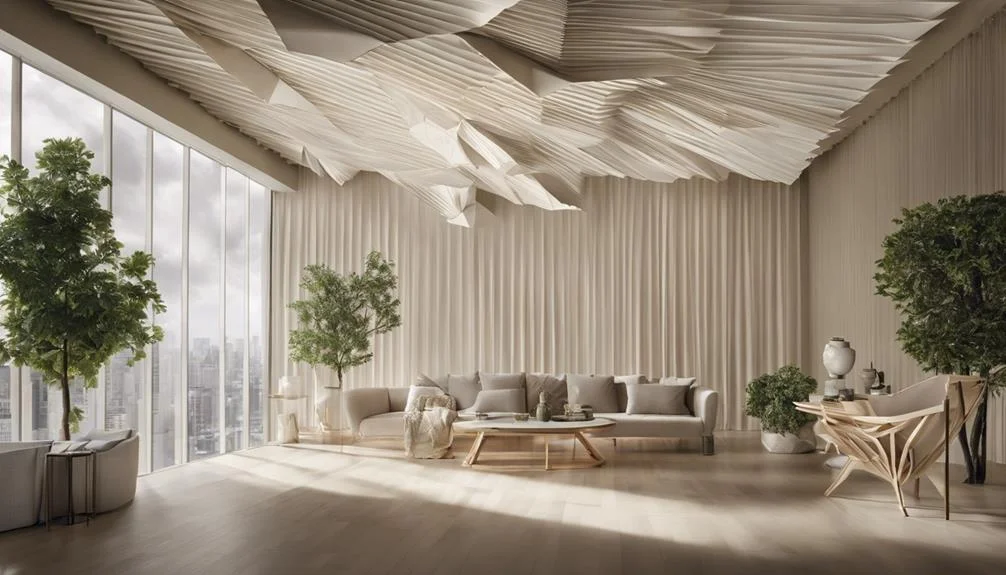
Nine-foot ceilings significantly elevate the visual appeal of interiors by introducing an element of grandeur and sophistication. This architectural choice is not just about creating a beautiful space; it's about transforming the ambiance and enhancing the aesthetic value of a room. The additional height provides a canvas for design creativity, allowing for a luxurious and open atmosphere that captivates and impresses.
Here are some of the aesthetic implications of nine-foot ceilings that contribute to their appeal:
- Luxurious Ambiance: The added height instills a sense of luxury, making spaces feel more opulent and well-designed.
- Enhanced Spatial Perception: Rooms appear larger and more inviting, creating an illusion of more space.
- Creative Design Possibilities: The extra vertical space opens up a wealth of design options, from elaborate lighting fixtures to tall artwork and decorative elements.
- Improved Natural Light: Taller windows can be accommodated, which flood the interior with natural light, enhancing the mood and appearance of the space.
Functional Benefits

While aesthetic appeal is a significant advantage, the functional benefits of 9-foot ceilings, such as enhancing spatial perception and improving natural light, further contribute to their desirability in modern living spaces. The added height creates an undeniable sense of spaciousness and openness, transforming an ordinary room into a grand and luxurious environment. This openness not only elevates the ambiance, providing a sophisticated and elegant feel, but also plays a crucial role in the psychological comfort of the inhabitants, making spaces seem less cramped and more inviting.
Moreover, the increased vertical space welcomes enhanced natural light, which can brighten interiors significantly. This influx of sunlight not only reduces the reliance on artificial lighting during the day, thus potentially lowering energy costs, but also promotes a healthier living environment by improving mood and well-being. Additionally, 9-foot ceilings accommodate taller furniture and elaborate decorations, offering homeowners and interior designers alike more creative freedom in their design choices. This flexibility enables the creation of unique and personalized spaces that fully utilize the vertical dimension, adding to the overall functionality of the living area.
Considerations for Maintenance
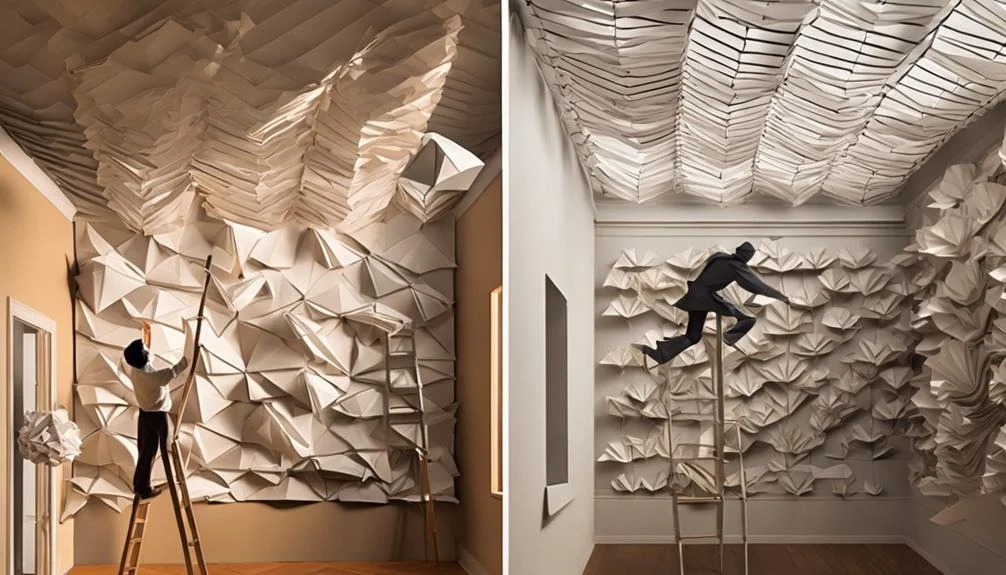
Maintaining 9-foot ceilings presents unique challenges, including the need for special cleaning equipment and more frequent upkeep to prevent dust accumulation. As these elevated spaces can significantly enhance the aesthetic and spatial feel of a home, ensuring they are well-maintained is crucial. However, this maintenance comes with its own set of considerations that homeowners should be aware of to keep their spaces clean and inviting.
To add depth to this topic, here are key considerations to keep in mind:
- Specialized Cleaning Equipment: The height of 9-foot ceilings necessitates the use of tools like extendable dusters and long-handled brushes to effectively clean hard-to-reach areas.
- Regular Dusting and Upkeep: Consistent cleaning efforts are essential to prevent the buildup of dust and cobwebs, which are more prone to accumulate in high spaces.
- Professional Assistance: Some maintenance tasks may require the expertise of professionals, especially for repairs or when dealing with intricate light fixtures and decorative elements.
- Increased Cleaning Frequency: Due to their propensity to gather dust more easily, high ceilings may demand more frequent cleaning schedules compared to lower ceilings.
Understanding these considerations can help homeowners effectively manage the maintenance of 9-foot ceilings, ensuring their homes remain both beautiful and functional.
Impact on Home Energy Efficiency
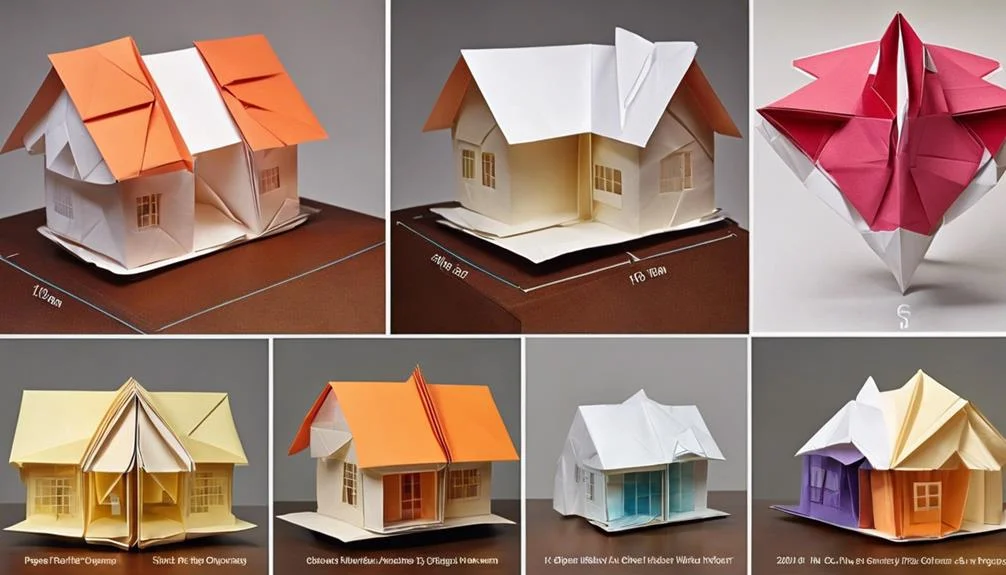
Exploring the impact of 9-foot ceilings on home energy efficiency reveals nuanced considerations. Increased heating costs and variations in cooling efficiency are central to evaluating their practicality and sustainability. Addressing insulation challenges is essential for optimizing energy performance, ensuring these architectural choices align with homeowner priorities in energy conservation.
These factors highlight the importance of a holistic approach to assessing the energy implications of ceiling height in homes. By considering heating, cooling, and insulation together, homeowners can make informed decisions that promote both comfort and energy savings.
Increased Heating Costs
Heating homes with 9-foot ceilings often incurs higher costs due to the increased volume of space that requires warming, particularly during colder months. This is because heat naturally rises, leaving more space to fill in rooms with taller ceilings. As such, homeowners may notice a significant impact on their energy bills.
To mitigate these challenges, consider the following strategies:
- Utilize energy-efficient heating systems to reduce overall consumption.
- Enhance home insulation to retain heat more effectively.
- Ensure proper sealing around doors and windows to prevent heat loss.
- Regularly maintain heating systems to ensure optimal performance.
Cooling Efficiency Variations
While addressing heating inefficiencies is crucial, it's equally important to consider the variations in cooling efficiency that 9-foot ceilings introduce to home energy management.
The increased volume of air in spaces with 9-foot ceilings necessitates more energy for effective cooling, potentially raising cooling costs. To counteract this, efficient insulation and HVAC systems are vital.
Moreover, the strategic placement of ceiling fans can significantly enhance air circulation, improving the overall cooling efficiency in these rooms. Additionally, homeowners can adopt energy-saving strategies such as installing programmable thermostats and ensuring proper sealing.
These measures are essential to maintaining cooling efficiency in homes with 9-foot ceilings, mitigating the potential increase in energy consumption.
Insulation Challenges Addressed
Given the significant role of insulation in maintaining energy efficiency, addressing the challenges associated with installing adequate insulation in homes with 9-foot ceilings is paramount. Transitioning to these taller ceilings without compromising on home comfort or skyrocketing energy bills requires a strategic approach.
- Increasing ceiling height necessitates more heating or cooling, impacting home energy efficiency.
- Adequate insulation minimizes energy loss through the attic and walls, crucial for 9-foot ceilings.
- Proper insulation materials and techniques can mitigate the energy efficiency challenges of taller ceilings.
- Addressing these insulation challenges is essential for maintaining a comfortable and energy-efficient home environment.
Alternatives and Recommendations
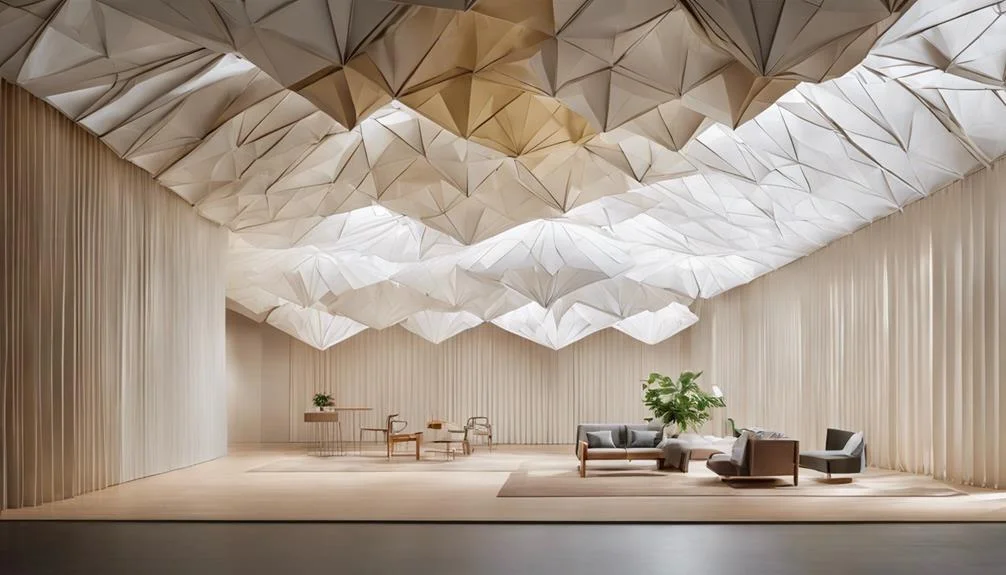
Exploring alternatives to nine-foot ceilings, such as decorative molding, paint techniques, and strategic lighting, offers a pathway to achieving a visually impactful space without compromising on design or functionality. These alternatives not only enhance the aesthetic appeal of a room but also allow for a degree of personalization and customization that can adapt to individual preferences. For those seeking a more dramatic effect, considering tray ceilings or vaulted ceilings can provide a unique look and feel that elevates the overall design.
Architectural design plays a pivotal role in determining the appropriate ceiling height, balancing both aesthetic aspirations and practical considerations. It is crucial to evaluate the specific requirements of a space, including its dimensions, purpose, and the desired ambiance, to make an informed decision about ceiling design. By exploring different design options, homeowners and designers can create an interior that is both distinctive and appealing, ensuring a perfect harmony between style and functionality. Ultimately, the choice of ceiling height and design should reflect the homeowner's personal style while catering to the practical demands of the living space, ensuring that the final outcome is both satisfying and efficient.
Conclusion
In conclusion, the decision to implement 9-foot ceilings entails a careful assessment of both its advantages and drawbacks.
While these elevated ceilings offer aesthetic appeal, improved natural lighting, and a sense of spaciousness, they also introduce challenges such as increased construction and maintenance costs, as well as potential implications for energy efficiency.
It is crucial for homeowners and builders to evaluate these factors in the context of their specific needs and preferences, balancing the desire for luxury and openness with practicality and sustainability.










